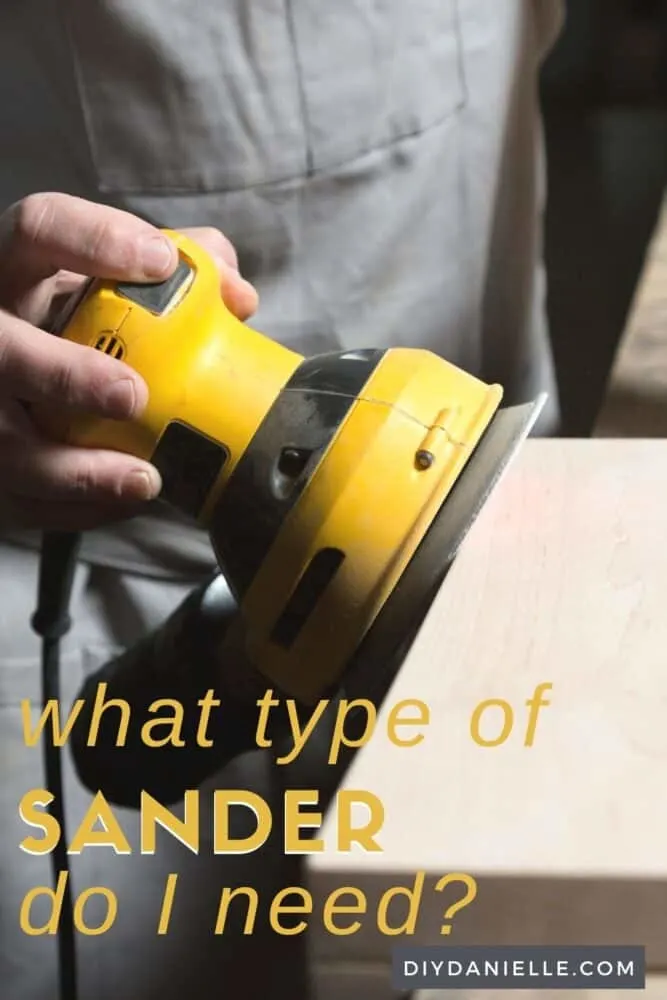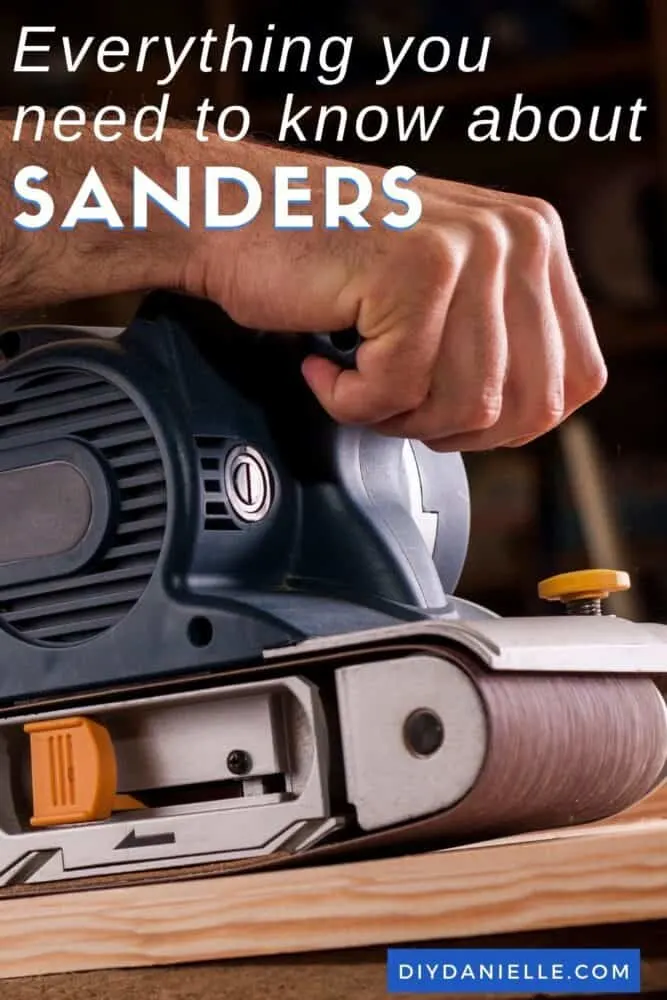
Learn about the different types of sanders available for DIY projects. This is a great guide to choosing the right sander for the job!
This post may contain affiliate links which may earn me commissions should you click through them and take certain actions. As an affiliate for Amazon, Cricut, xTool, Home Depot, and other sites, I earn from qualifying purchases. Please DIY carefully. View my full legal disclosures here.
Please read the whole post so you don’t miss any important information!
For any type of DIY wood project, odds are you will need a sander at one point or another. There are many different types of sanders, and each have unique purposes and benefits. You will need to decide which sander is best for your specific project.
This is an overview of the different types of sanders and what their uses are. With every sander, you will likely need sandpaper to go with it.
Here is a guide on the various types of sandpaper you can buy for your sander.
Types of Sanders
Manual Sanding Block
This is a very basic sander that runs off your own physical labor instead of using electricity. It can come in the shape of a palm surface, block, or bar handle. When you need to perform a quick sanding job, such as quickly smoothing out dried putty, this can be a great sander to reach for. The most common form is the sponge manual sanding block.
Belt Sander
This popular sander is ideal for furniture making or working with large pieces of wood. It can be a good option if you need to remove an existing finish such as old varnish or paint. You will need to follow the grain to create a smooth finish. This type of sander is composed of a sanding belt with two drums. The back drum is motorized while the front drum moves freely. The belt sander comes in four different sizes, as described below:
Smallest (3×18)- This is the best size for beginners. It is the most stable belt sander size, making it easier to control.
Smaller (3×21)- This size belt sander is the most common because it has a good combination of speed, balance, and power.
Larger (3×24)- The main advantage to this size is its ability to cover a large surface area at one time without being too difficult to manage.
Largest (4×24)- This size is only recommended for those who have a lot of experience working with belt sanders.
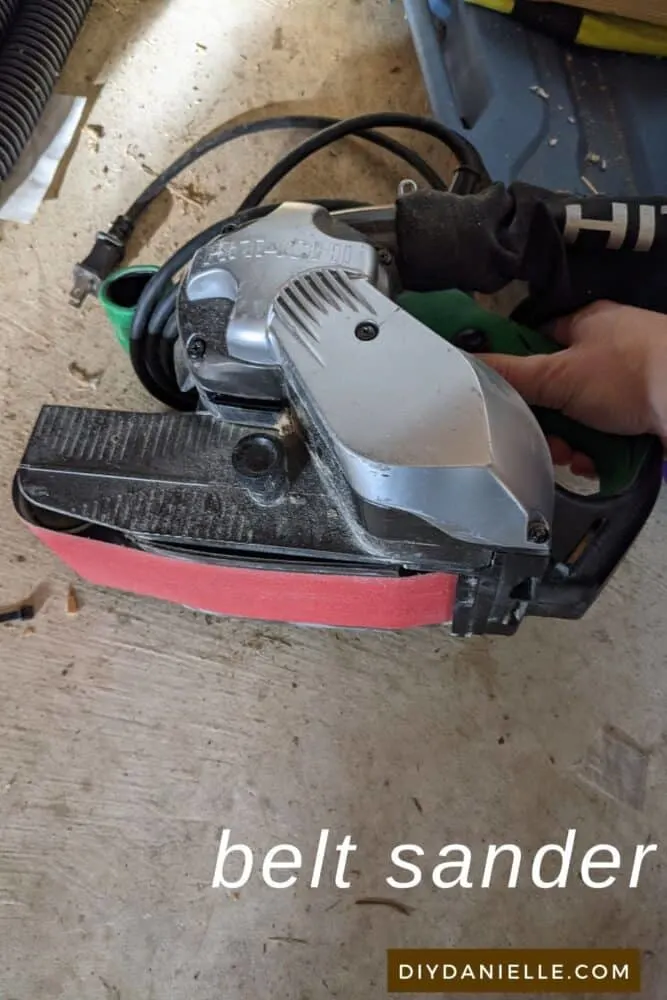
A belt sander can be a good investment for someone who regularly completes large wood projects.
Disc Sander
If you need a versatile sander than can be used with a range of grit sizes, a disc sander could the perfect tool. It is most commonly used as an attachment on a power drill, but it does also exist as a table mounted version. The drill attachment uses a disc that is more mobile, but the stationary version can cover a greater surface area.
This sander can produce a super fine finish and even be used on other materials such as metals or plastics. Overall, the disc sander is one of the best for DIY wood projects.
Drywall Sander
A type of disc sander, the drywall sander is designed specifically to reach ceilings or other tall surfaces. It could also include a handle near the hub for easier to reach areas. As indicated by the name, this sander is used primarily to smooth drywall.
Orbital Sander
Also known as a finishing sander, the orbital sander is a great tool for lighter projects. It is a small, compact sander that is easy to manage. The hub uses one-fourth of the standard 9×11-inch sheet of sandpaper. This sander vibrates in tiny orbits to create an ultra-smooth finish. Because of its light sanding, it can also be used on metal and plastic. The orbital sander is best for removing putty, rounding sharp edges, painting, or restoring the transparency on headlights.
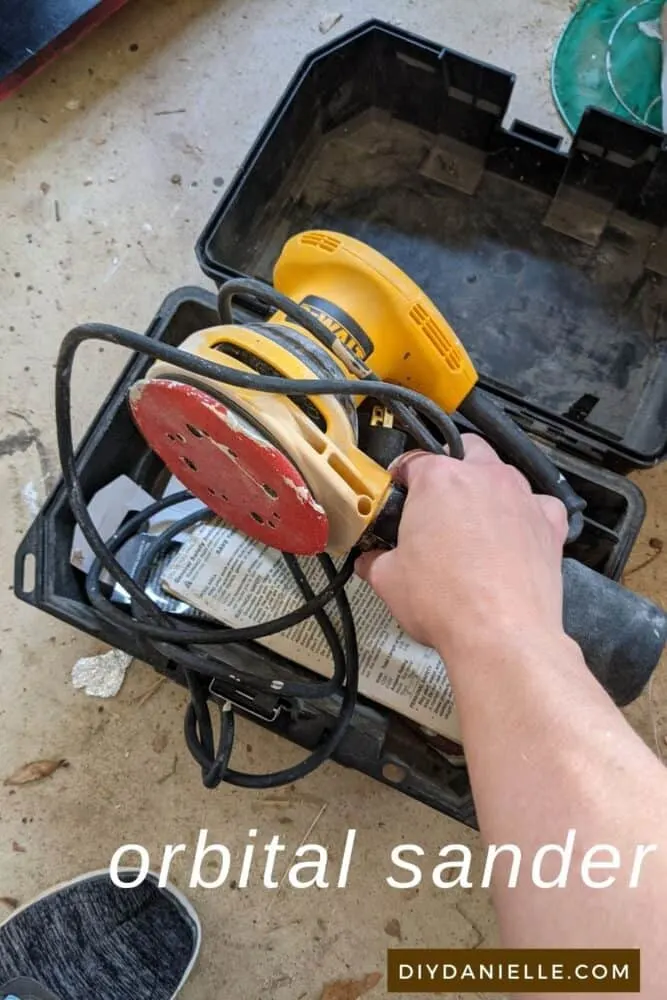
Random Orbital Sander
This type of sander is very similar to the orbital sander, but it contains a round hub instead of a square. It can also remove more material and prevent the marks caused by cross-grain scratching with the orbital sander. The sanding pad comes in two sizes, either 5- or 6-inch diameter pieces. The hand grip can also vary depending on the model.
A random orbital sander is one of the most versatile types of sanders. If you don’t do a lot of wood working projects, this could be the ideal sander to have in your workshop. It carries out the function of both a belt sander and orbital sander, but at a slightly less efficient level of performance. A random orbital sander can create a finish or remove stock on a piece of wood. This type of sander works well for a variety of projects.
Oscillating Spindle Sander
This is a stationary sander that consists of a singular sanding drum. The drum functions by moving up and down as it runs. This allows more of the drum to be exposed to the wood, preventing burn marks and grooves. The size of the drums and the horsepower of the sander varies. Benchtop models of oscillating spindle sanders can use drum sizes up to 4 inches tall with a diameter of ½ to 2 inches. The freestanding table oscillating spindle sanders can hold drums 4 inches tall and up to 4 inches in diameter. Some models of this type of sander can convert to a belt sander using a separate attachment. Overall, an oscillating spindle sander is great for smoothing boards or fine sanding tight spaces, such as spindles.
Detail Sander
A detail sander is also known as a mouse sander or corner sander. If you are needing to sand furniture, this sander could be a great option. The triangle shape includes a tapered edge that can easily navigate tight spaces. In addition, it can also sand a flat plane, making it an ideal sander for all aspects of a piece of furniture.
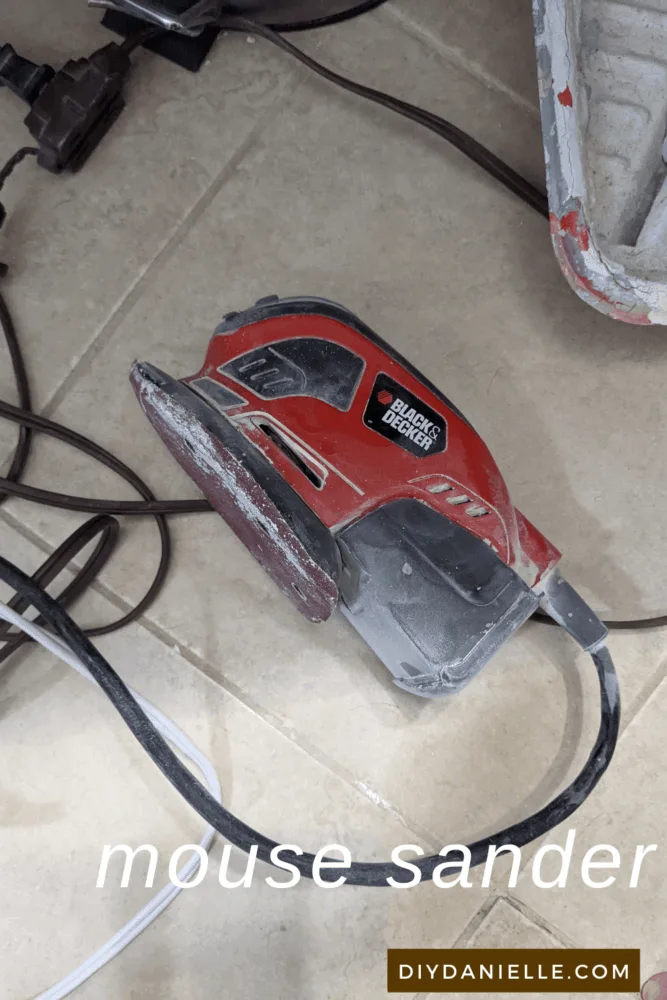
The corner cat sander is handheld and compact. If you work with furniture a lot, you will likely benefit from having this sander.
Floor Sanders
As the name implies, these sanders are used to install or resurface hard wood flooring. There are two broad categories of these sanders, which are described below:
Drum Sander
This sander has a large drum on the bottom with a long handle, making it look like a lawnmower. It has to be pushed across the floor and will sand as it goes. This sander works by cutting an 8”x1/2” indention on your floor every second. If you push the sander at a steady pace, it will leave a smooth finish. However, if you pause at any time it could create something called a “stop mark” on the floor. The drum sander is a very helpful tool for removing paint or putty from the floor, but it can be tricky for beginners to use correctly.
Edging Sander
An edging sander can be very useful if you need to refinish a floor. It is designed to sand the edges of a room, or any surfaces too narrow to fit the drum sander. When using the same grit of sandpaper, both the drum sander and edging sander will remove the same depth of wood. This allows for synchrony when using the two machines together. An edging sander runs in a clockwise motion, so it is best to follow the edge of the space in a clockwise direction.
For wood flooring, having both a drum and edging sander will help you to complete the project from start to finish. These machines can be expensive, so you may want to rent them for each project.
Choosing the right tool could be the difference between your DIY wood project turning out as a success rather than a source of frustration because the results weren’t what you expected them to be.
In order to select the right sander, you will need to consider the size, shape, and condition of the material you will be working with. Some sanders are versatile and can produce quality results across a variety of projects.
Don’t hesitate to start with an easier sander and work your way up to a more complex kind that requires more experience to manage. Overall, the best sander will be one that you are comfortable with using.
Please share and pin this post! If you make this project, share it in our Stuff Mama Makes Facebook Group. We have regular giveaways for gift cards to craft stores. You can also tag me on Instagram @doityourselfdanielle; I love seeing everything you make!
